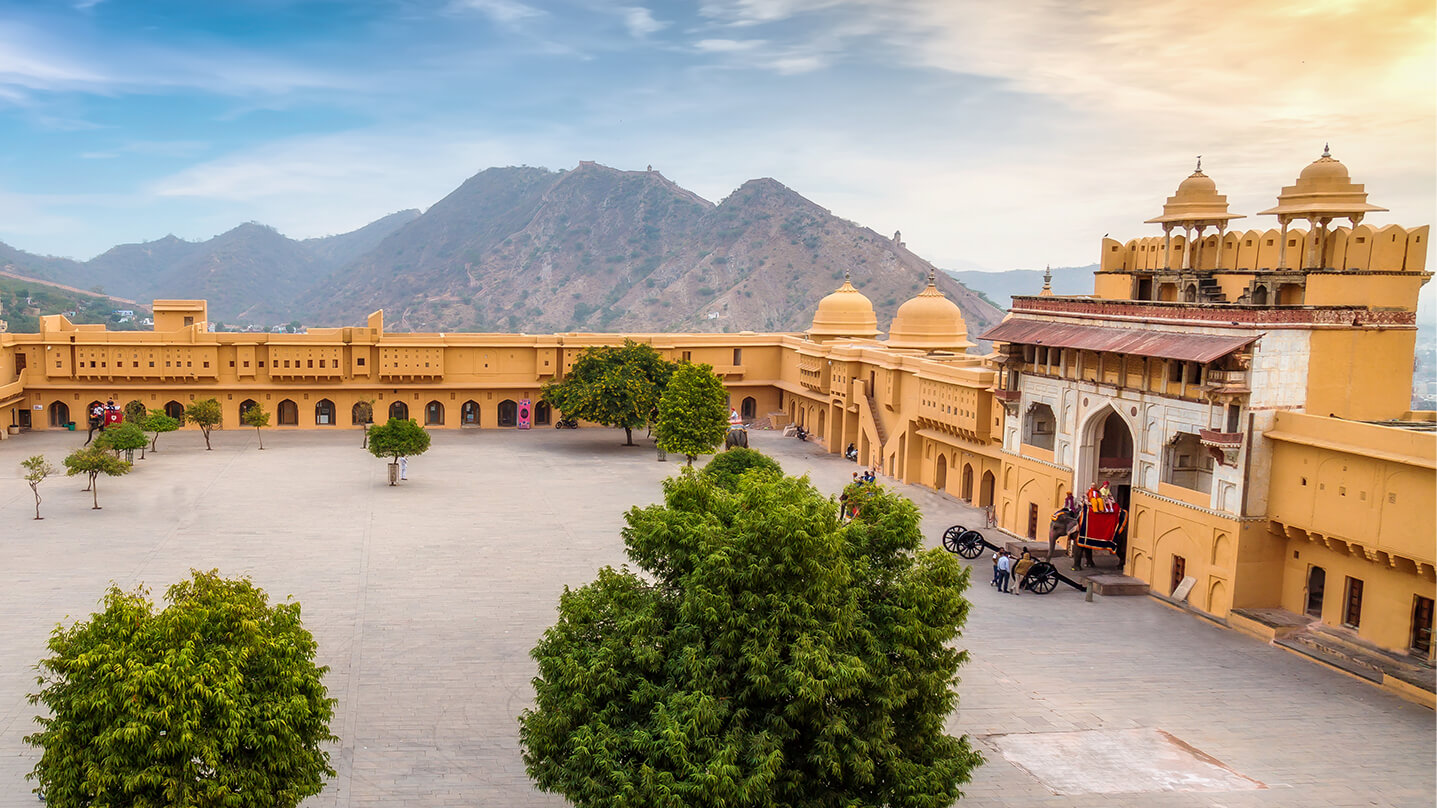RumiSthan
Rajasthan through eyes of Rumi
Rumi | Januray 29th, 2019
-
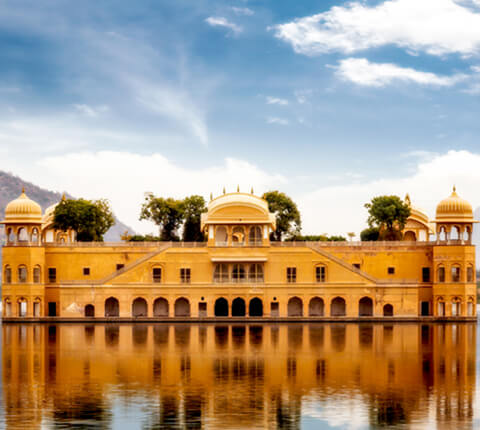
Famous Monuments in Rajasthan
Rajasthan is home to fairy-tale palaces, forts of epic proportions and colourful festivals. The state remains on the wish-list of every traveller who wants to encounter the euphoric blend of history, traditions and culture in a single place. At the same time, Rajasthan holds a soft corner in the hearts of history aficionadas. The monuments in Rajasthan, created in different architectural styles, are a delight to behold, and here are some that should be visit at least once.
-
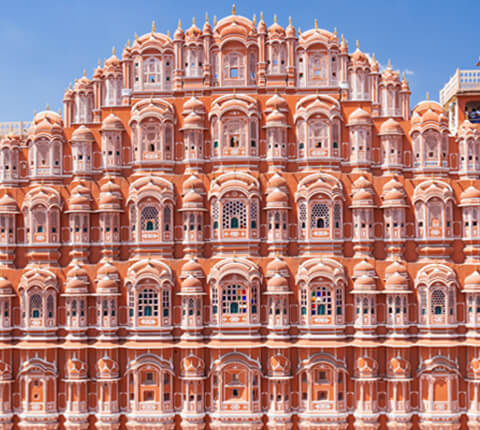
Hawa Mahal
Hawa Mahal is the most distinctive landmark in Jaipur. The monument is a pink-painted, delicate honeycombed building, rising five storeys high. The Hawa Mahal was constructed in 1799 by Maharaja Sawai Pratap Singh. And the purpose of the building was to allow the ladies of the royal household to watch the daily life and procession passing through the city. The monument offers stunning views of the City Palace and Jantar Mantar in one direction, and over Sireh Deori bazaar in the other.
-
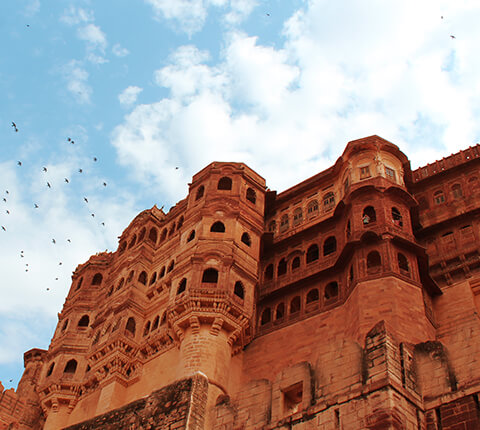
Mehrangarh
Mehrangarh rises almost perpendicularly from a rocky hill that stands about 120m above the city of Jodhpur. The Mehrangarh fort is one of the most spectacular forts in India. The forts battlements are 6m to 36m high. As the building materials is the same rock on which the fort stands, it seems that the structure merges with the base. The fort is still run by the Royal family of Jodhpur and is packed with history and legend.
-
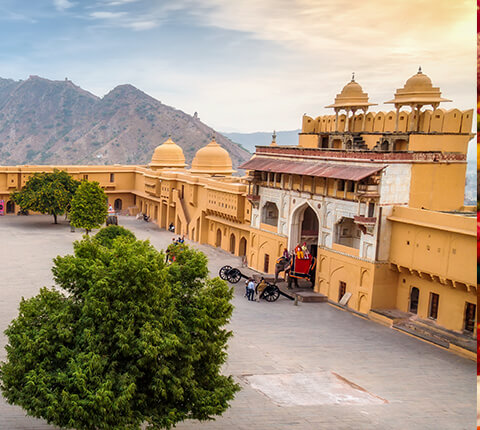
Amber Fort
Amer the former capital of the old state Dhundhar for seven centuries built by Raja Man Singh in the 16th century is now a fort that comprises of extensive palace complex and is constructed from pale yellow and pink sandstone and white marble. The complex is divided into 4 main sections, each with its own courtyard. You can enter the Amber Fort through Suraj Pol, which would lead to Jaleb Chowk, the place where returning armies would display their war booty. Women could view this from the veiled windows of the palace. The main stairway will take you up to the Diwan – I – Aam (Hall of Public audience) and the second courtyard. The Diwan – I – Aam has double rows of column, and each one is topped by an elephant shaped capital.
-
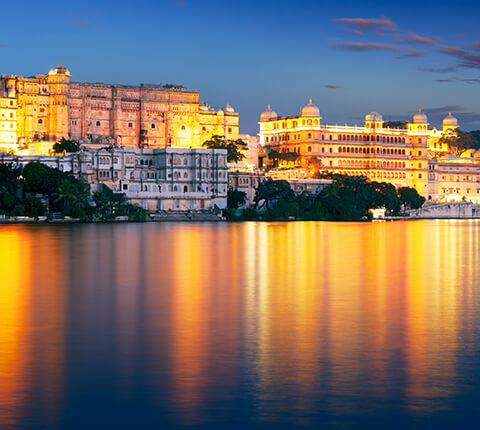
City Palace
The City Palace is surmounted by balconies, cupolas, and towers overlooking the lake. The City Palace is Rajasthan’s largest palace, and boasts of façade that is 244m long and 30.4 m high. The construction of the palace began in 1599 by the city’s founder, Maharana Udai Sing II. The palace later became a collection of structures. This includes 11 separate smaller palaces which were built and extended by later rulers. What is exciting is that the Palace manages to retain a uniformity of design.
-
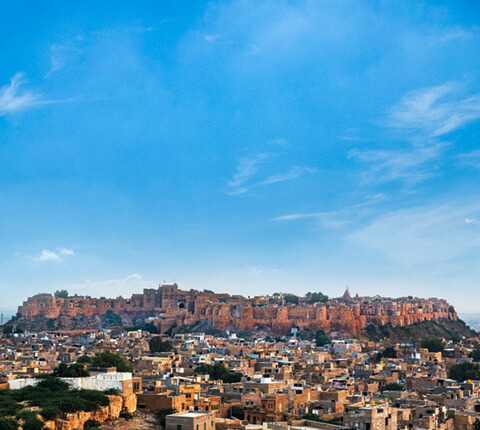
Jaisalmer Fort
Jaisalmer Fort is still home to about 3000 people who reside within its walls. The fort has narrow winding lanes that are lined with houses and temples. One can enter the fort from the east and pass through the four huge gates on the zigzagging route. The last gate opens onto the square that forms the Fort’s centre. The fort was initially constructed by Rajput ruler Jaisal in the year 1156, and was later reinforced by subsequent rulers.



